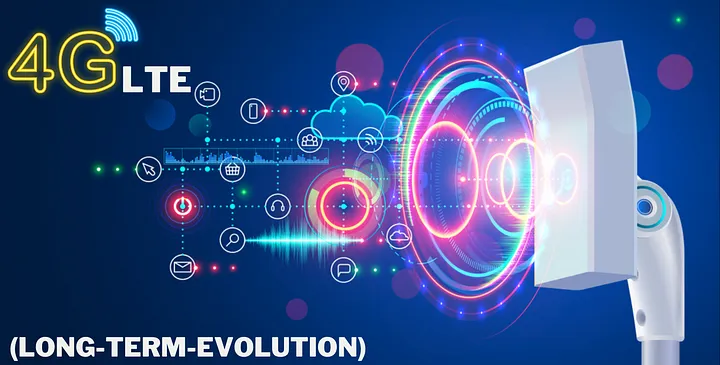Welcome to The Beacon Chronicles, a series of articles that will take you on an exciting journey through the world of beacons and location-based services in the realm of retail. In this collection, we will explore the intricacies and advancements of this technology, starting from the basics and gradually delving into more specialized and technical aspects.
- What are Beacons and location-based services in Retail?
Beacons are small, wireless devices that leverage Bluetooth Low Energy (BLE) technology to transmit signals to nearby mobile devices. These signals contain unique identifiers, allowing businesses to detect and interact with customers in close proximity. Location-based services, on the other hand, utilize the data transmitted by beacons to deliver personalized and context-aware experiences to customers within a physical space. Together, beacons and location-based services have revolutionized the way retailers engage with their customers, bridging the gap between the physical and digital worlds.
- How does it apply to Local LTE?
Local LTE, or private LTE networks, play a vital role in enabling seamless communication and data exchange between beacons and connected devices within a retail environment. By establishing a dedicated wireless network, retailers can ensure reliable and secure connectivity, facilitating the delivery of real-time, location-based information and services. Local LTE networks provide the infrastructure necessary to support the scalability and performance required for an effective beacon-based ecosystem in retail.
- What are the roles of Local LTE for Beacons and location-based services in Retail?
Local LTE networks serve multiple roles in conjunction with beacons and location-based services in the retail sector. They act as the backbone for transmitting data from beacons to backend systems, enabling retailers to gather valuable insights about customer behavior, preferences, and real-time footfall analytics. Moreover, local LTE networks provide the necessary connectivity for delivering targeted notifications, personalized offers, and enhanced customer experiences, all based on a customer’s precise location within the retail space.
- What are some key use cases?
The implementation of beacons and location-based services in retail has unlocked a myriad of use cases. Retailers can now engage customers with personalized offers and discounts when they are near specific product displays, provide indoor navigation assistance to help shoppers find their desired items, offer virtual product information overlays, enable seamless mobile payments, and even create interactive augmented reality experiences within the store. These use cases enhance customer engagement, boost sales, and improve overall customer satisfaction.
- What is the mechanism behind beacons and why are they required?
Beacons operate on a simple principle: they continuously broadcast unique identifiers that can be detected by nearby mobile devices. When a customer’s smartphone or tablet receives the beacon signal, it triggers the associated mobile application to provide location-specific information or perform specific actions. Beacons are vital in retail as they bridge the gap between the digital and physical realms, enabling retailers to deliver personalized and contextually relevant experiences to their customers, thereby increasing customer engagement and driving sales.
- How can Local LTE help in the implementation of Beacons and location-based services in Retail?
Local LTE networks provide several advantages in the implementation of beacons and location-based services in retail environments. Firstly, they offer enhanced coverage and reliability compared to traditional Wi-Fi or cellular networks. This ensures consistent connectivity between beacons and customer devices, reducing the chances of signal drops or interruptions. Additionally, local LTE networks can handle large volumes of data generated by numerous beacons, enabling real-time analytics and insights for retailers to make data-driven decisions. Moreover, with local LTE, retailers have more control over the network, ensuring higher levels of security and data privacy.
- How does Local LTE enhance the accuracy of location-based services in Retail?
Location accuracy is crucial for delivering precise and contextually relevant experiences to customers. Local LTE networks, combined with beacons, significantly improve location accuracy within a retail space. By leveraging advanced techniques such as trilateration and fingerprinting, beacons can determine a customer’s position with high precision. Local LTE networks provide the necessary infrastructure to transmit this location data to backend systems in real-time, allowing retailers to deliver personalized notifications, offers, and information based on a customer’s exact location within the store.
- Can Local LTE networks support the scalability required for large retail environments?
Absolutely! Local LTE networks are highly scalable and can effectively support large retail environments. Whether it’s a single store or a multi-store retail chain, local LTE networks can be designed and deployed to accommodate the specific needs of each location. By strategically placing LTE access points throughout the space, retailers can ensure comprehensive coverage, enabling seamless communication between beacons and customer devices across the entire retail environment. This scalability empowers retailers to deliver consistent and personalized experiences to customers, regardless of the store size.
- How does Local LTE contribute to data analytics in Retail?
Data analytics plays a crucial role in understanding customer behavior, optimizing store layouts, and improving overall retail operations. Local LTE networks provide a robust infrastructure for collecting and analyzing data from beacons and other connected devices. By capturing and processing data in real-time, retailers can gain valuable insights into customer footfall patterns, dwell times, popular product areas, and more. This data-driven approach enables retailers to make informed decisions, optimize their marketing strategies, and personalize the shopping experience to drive customer satisfaction and loyalty.
In conclusion, The Beacon Chronicles has provided a comprehensive introduction to the power of beacons and location-based services in the retail industry. We have explored the fundamental concepts of beacons and their role in bridging the gap between the physical and digital worlds. We have also discovered how local LTE networks play a vital role in enabling seamless communication, enhancing accuracy, and supporting scalability within a retail environment. By leveraging beacons and local LTE, retailers can deliver personalized experiences, gain valuable insights through data analytics, and drive customer engagement and loyalty. As we continue this series, we will delve deeper into the technical aspects, unlocking further possibilities and empowering retailers to create exceptional retail experiences. Stay tuned for the next installment of The Beacon Chronicles!




